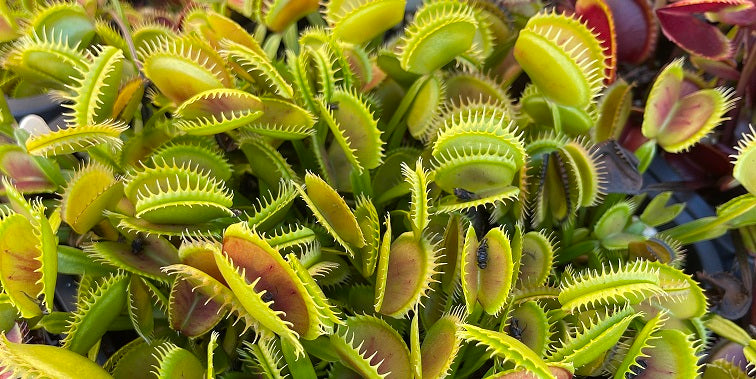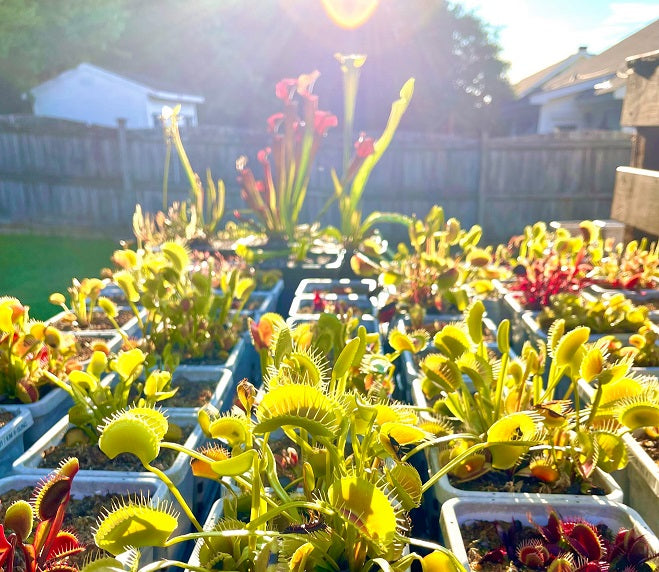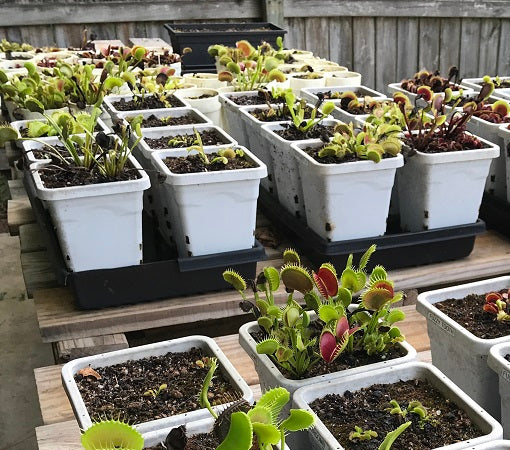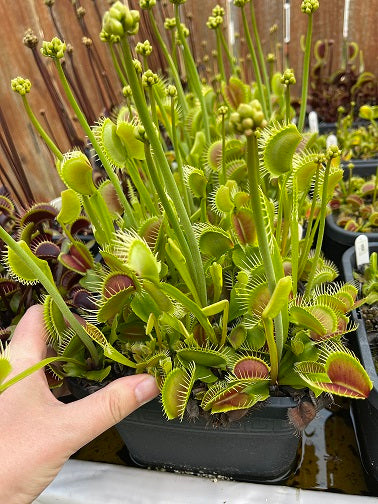
Carnivorous Plant Care
Feeding
Carnivorous plants naturally catch insects in the wild, so extra feeding isn't necessary. If grown indoors, you can lightly spray them with a mixture of 1/4 tsp per gallon of water for added nutrients.

Sunlight
Proper lighting is essential for the health and vigor of your Venus flytrap. They need at least 4 hours of direct sunlight and a 12-hour photoperiod. The best spot is outdoors in full sun, but indoors, a south-facing window works well. They can also thrive under artificial lighting with the right bulbs and setup. The more sunlight, the better!

Watering
Use only rainwater, distilled water, reverse osmosis (RO) water, or water with low dissolved solids (measured with a TDS meter). Tap water contains minerals that can harm your Venus flytrap. Keep the growing medium moist, not soggy, and adjust watering frequency based on its environment (full sun outside or sunny windowsill indoors). I personally let my plants sit in a small dish of water, letting it dry out completely before refilling, and it works great!

Soil
To grow healthy Venus flytraps, use nutrient-poor soil. Avoid regular potting soil or fertilizers, as they can burn the roots. A simple mix of 1 part sphagnum peat moss and 1 part silica sand works well. Look for "pool filter" or sandblasting sand. Avoid brands with added fertilizers like Miracle-Gro. Tall pots are best to allow for deep root growth, and plastic, Styrofoam, or insulated pots are ideal. Avoid dark-colored pots, as they can overheat the plant, and steer clear of clay pots, which may leak minerals that harm the roots.

Flowers and Dormancy
Carnivorous plants, like Venus flytraps, sundews, and pitcher plants, not only trap and digest insects but also bloom with beautiful flowers. These plants go through a natural cycle of dormancy, typically in the winter, where their growth slows down, and they rest to conserve energy. During dormancy, it's important to reduce watering and keep them in cooler temperatures to mimic their natural environment. Once spring arrives, they wake up and begin growing again, including producing unique flowers. Understanding this cycle helps ensure healthy growth and vibrant blooms year after year!
